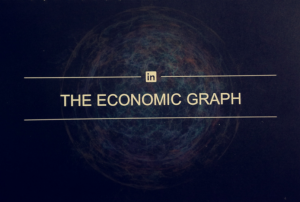For another class, that I really encourage you to take (Business Model Innovation – ME2815), I studied the case of WhatsApp. As I found it really interesting, it seemed to me that it could be cool to share my thoughts on the subject with you so we could eventually debate about it.
Everybody knows WhatsApp right? A lot of us are using it everyday, with our friends, our family, and especially those like me who are living abroad. This is a brilliant, easy-to-use, ad-free tool that you must have on your phone today. In 2015, almost one in seven person on Earth was using WhatsApp every month [1].
For this assignment, I had to describe WhatsApp business model. I decided to describe it following the definition of a business model that Alan Afuah gave in his book Business Model Innovation (2014) [2]. According to him this is how we can represent the different components of a Business model:
- Customer Value Proposition: What WhatsApp has to offer to customers?
First of all, WhatsApp is free to use for the first year. It is a better and cheaper alternative for customers to send each other messages without having to pay for SMS or MMS. WhatsApp is an IP-based software (software that use the Internet Protocol to deliver content), thus in order to be able to use the application and send messages to his contact, the user only needs a WiFi connection or a data access plan.
WhatsApp is not only a text based messaging application, it is a real time messenger with several features such as: the ability to create groups, send each other images, video and audio media messages, share geographical positions and so on.
WhatsApp is available on every different Smartphone Operating System, but also on a lot of regular phones (with limited functionality), allowing therefore anyone with a phone and an Internet connection to use the Application and be reachable by everyone. It is also important to note that you can use WhatsApp even if you don’t have a phone or a smartphone. Indeed there is a Desktop version of WhatsApp.
WhatsApp is an incredibly easy app to use; it is in WhatsApp’s philosophy to keep it as simple as possible, just like their revenue model that I will discuss later. They want the app to be easy to download (be accessible on every application download platform), and easy to use. For example, because of their partnership with Facebook, once the application is installed you can see all the WhatsApp users among your Facebook contacts and directly chat with them, same thing with the contacts already registered in your phone.
Another recent and very interesting Customer value proposition is the fact that every message sent on WhatsApp is encrypted. With billions of messages sent every month on WhatsApp this point is a really good and impressive value added to the application.
- Market Segments: Who are the WhatsApp customers?
The median age of a WhatsApp user was 36 years old at the end of 2013, but because it is really easy to use the app is used by adults of all ages. WhatsApp is also very popular among teenager users. It can be explained by the possibility of having group conversations, the ability to send unlimited amount of images, audio messages and so on. WhatsApp is really popular among the community of people living abroad because of the possibility to send messages over the entire planet they can stay in touch with their home friends and family.
- Revenue Model: How is WhatsApp generating revenue from customers?
WhatsApp is a subscription service. It is free to use for the first year. Once the free one-year trial period is over, there is a subscription fee of $0.99 USD. It is also important to note that if you originally downloaded WhatsApp for $0.99 USD, then as a “courtesy for having to pay to download the app, you will retain a lifetime subscription” [3].
WhatsApp always refused to use advertising as a source of revenues.
This revenue model can sound really simple but the philosophy of WhatsApp founders has always been to keep their application simple: easy to use, and ad-free, as Jan Koum (WhatsApp co-founder) once said “do one thing, and do it well”[4].
- Growth Model: How can WhatsApp grow profitably?
If WhatsApp is against the fact to use advertising as a source of revenue, they also spent absolutely nothing on advertising or promoting for their app in order to grow. WhatsApp founders believe that there is no better promoting campaign than word to mouth and having a useful product used globally by everybody. Because of their anti-marketing strategy, their cross-plateform operability (on both smart and feature phones), the privacy and the affordability of the application WhatsApp is enjoying an impressive viral growth.
- Capabilities: What are WhatsApp resources and Activities?
WhatsApp physical resources are mainly their server based infrastructure (hardware) that has to deal with the incredible amount of data that the application is producing and their instant messaging application (software).
WhatsApp human resources are not that consequent, indeed the case in 2014 the company only had around 60 employees with a majority of them being engineers. It is also important to note that a part of the development of the application has been possible because of the work of volunteers that helped the developers to translate the application in more than 30 different languages.
WhatsApp organizational resources are composed of their partnerships with Software developers from Russia, and with device manufacturers and telecom operators that helped them to reach more users. In 2014 Facebook bought WhatsApp for $19 Billion USD, giving them access to Facebook’s resources. I could also include in the organizational resources the 01 billion people using the application every month giving the company an incredible strength in the market. This large user base is due to the philosophy of affordability, privacy and ad-free that is behind WhatsApp, becoming a trusted brand for the customers.
Is WhatsApp competitive advantage durable?
WhatsApp was a pioneer in the OTT (Over-The-Top applications) world and benefits of the first mover advantage.
They created the market in which they are involved, doing that can be risky because you can face difficulties and these can shut your company down, while in the same time another company comes to the market, learn from your mistakes and becomes bigger than you. That is why the first mover advantage can be a short live advantage or durable advantage.
WhatsApp managed to create the market remaining faithful to their philosophy and building it the way they wanted. This is a proof of excellent management, durability and ability of evolution. WhatsApp have a strong and durable competitive advantage. Not because they have a technology leadership, indeed their technology is not superior to their competitors, but they have resources that are valuable, rare, difficult to imitate and difficult to substitute.
I talked about those resources earlier: their huge user base, and their trusted brand. Those resources are the real difference between WhatsApp and their competitors and they are what will make WhatsApp competitive advantage durable.
I know it might be a long post to read, but if you managed to read it all, do not hesitate to tell in the comments what you think about it!
Also I’m sorry if I made some english mistakes… Let’s not forget that I’m french!
References:
[1]: WhatsApp website; Blog; https://blog.whatsapp.com/616/One-billion
[2]: Sample of Allan Afuah’s book – Business Model Innovation ( 2014) : http://samples.sainsburysebooks.co.uk/9781136656422_sample_553280.pdf
[3]: WhatsApp website; FAQ; https://www.whatsapp.com/faq/en/iphone/30060258
[4]: Growth Hackers website; https://growthhackers.com/growth-studies/whatsapp
 S
S




